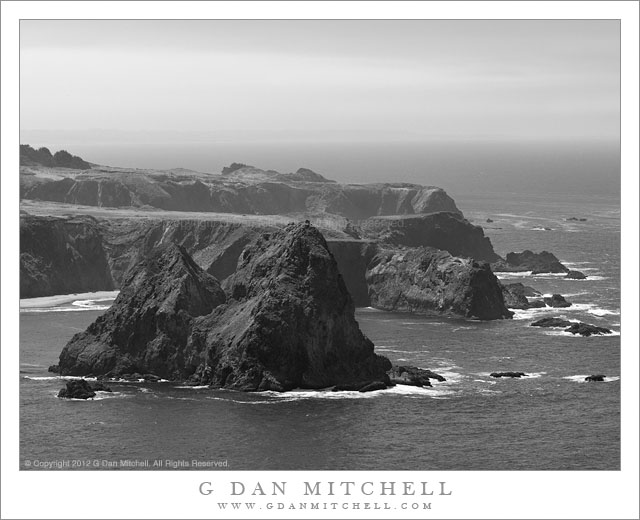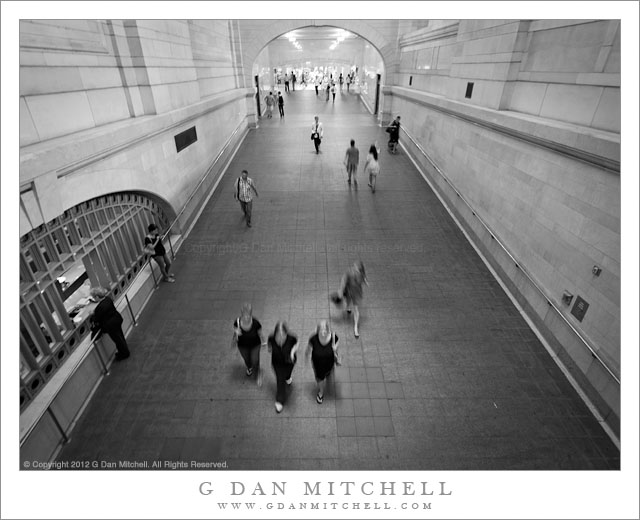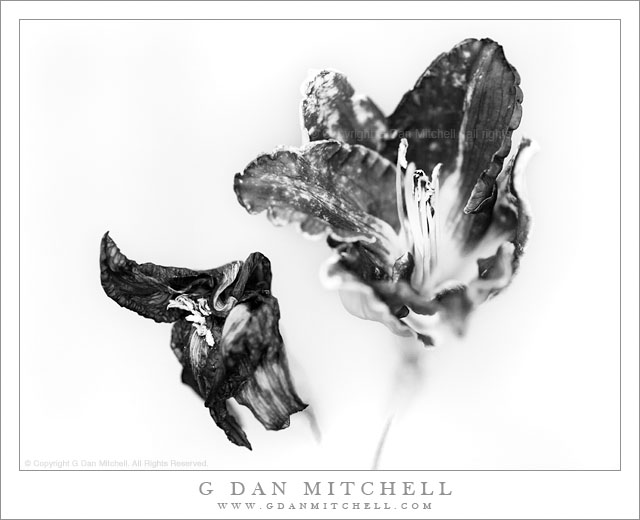
Island, Coastal Bluffs, and Distant Shore. Mendocino County Coastline, California. August 29, 2012. © Copyright 2012 G Dan Mitchell – all rights reserved.
A steep and rocky island backed by coastal bluffs and a distant shoreline, northern California coast, Mendocino County.
The last time I passed by this section of the California coast highway in Mendocino County, I also stopped to photograph this scene – but was less happy with the result. This section of the coastline, like much of the meeting between California and the Pacific Ocean, consists largely of high coastal bluffs, interspersed with the steep canyons where creeks and rivers meet the ocean, with many rocky islands ranging from tiny to huge. The two-peaked island in this large cove fits more into the huge category and it is backed by two fingers of land where the high bluffs extend toward the ocean. In the far distance, a section of curving coastline is barely visible through the haze.
Recently someone asked me about how I decide whether a photograph will be black and white rather than color. I admitted – and it turns out that many feel the same – that often I am not certain when I make the exposure. Roughly speaking, the black and white photographs come about in perhaps three ways. Sometimes I like the subject but the color rendition just isn’t working the way I had hoped, so I try it in black and white and “discover” that I like it that way in post. On other occasions, at the time of exposure I sort of wonder if it might work in black and white and I make mental note to try it that way in post. In the third case, I “know” (with only a small amount of doubt) that the image is going to end up in black and white and I shoot the scene with that in mind. This is one of those photographs – I was almost certain that it would end up in black and white as I stood high on a bluff next to highway 1 making the exposure.
 G Dan Mitchell is a California photographer whose subjects include the Pacific coast, redwood forests, central California oak/grasslands, the Sierra Nevada, California deserts, urban landscapes, night photography, and more.
G Dan Mitchell is a California photographer whose subjects include the Pacific coast, redwood forests, central California oak/grasslands, the Sierra Nevada, California deserts, urban landscapes, night photography, and more.
Blog | About | Flickr | Twitter | Facebook | Google+ | 500px.com | LinkedIn | Email
Text, photographs, and other media are © Copyright G Dan Mitchell (or others when indicated) and are not in the public domain and may not be used on websites, blogs, or in other media without advance permission from G Dan Mitchell.


